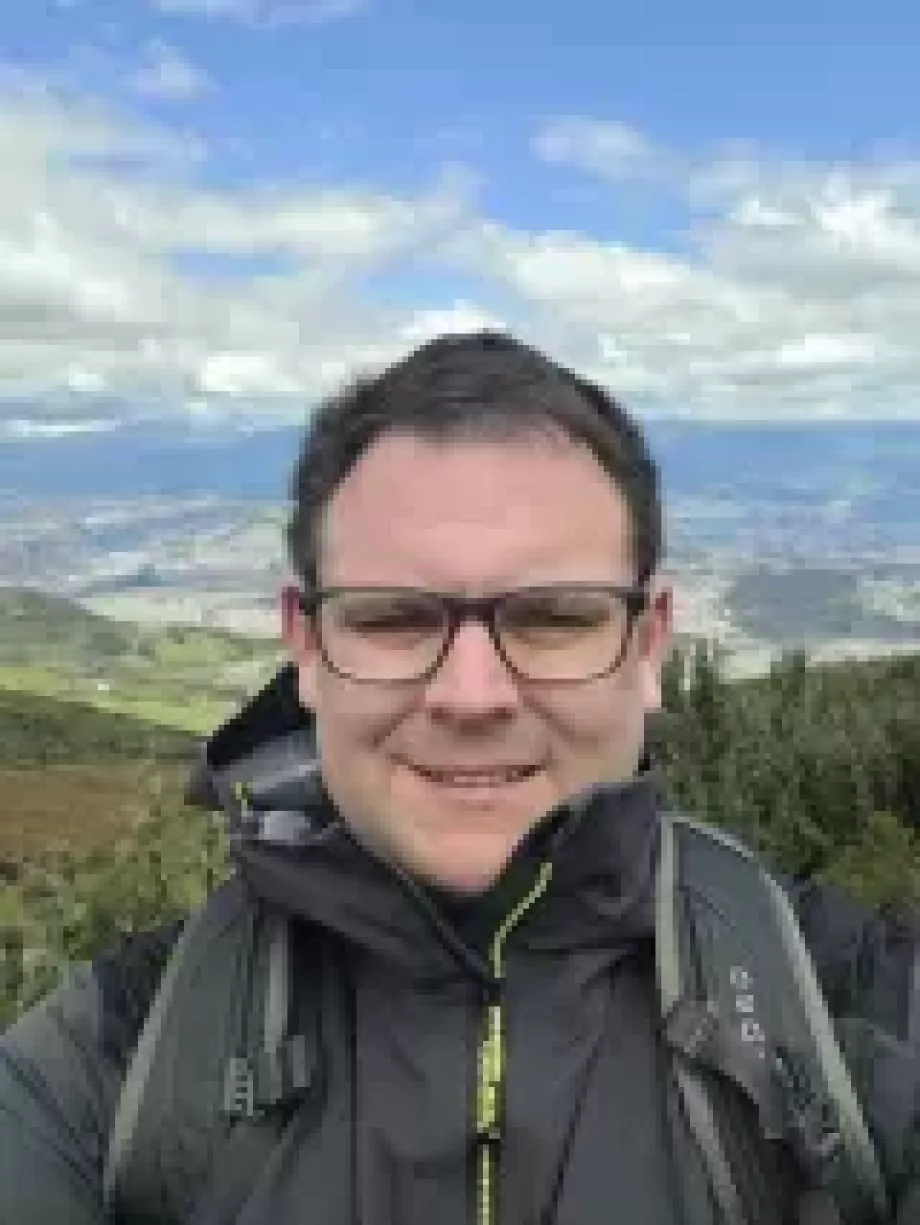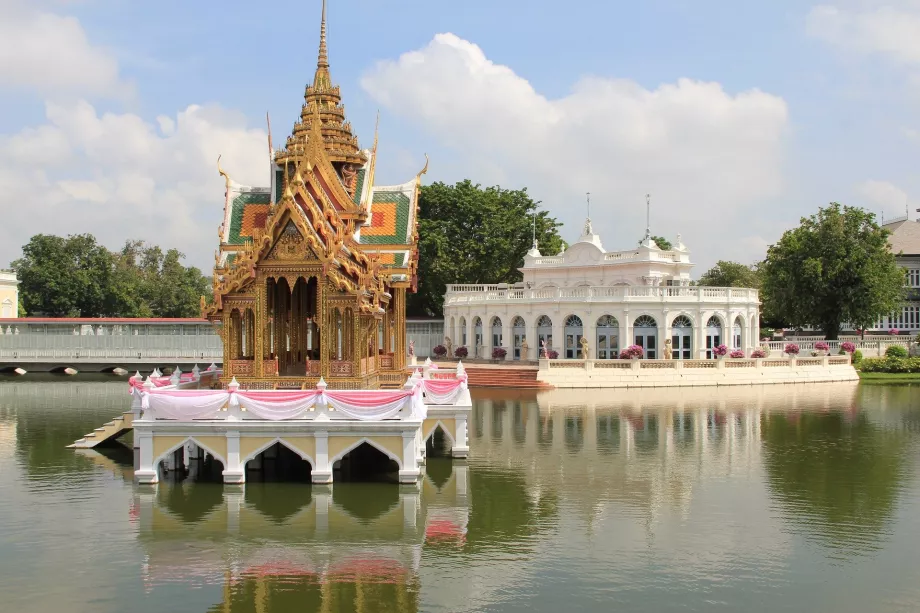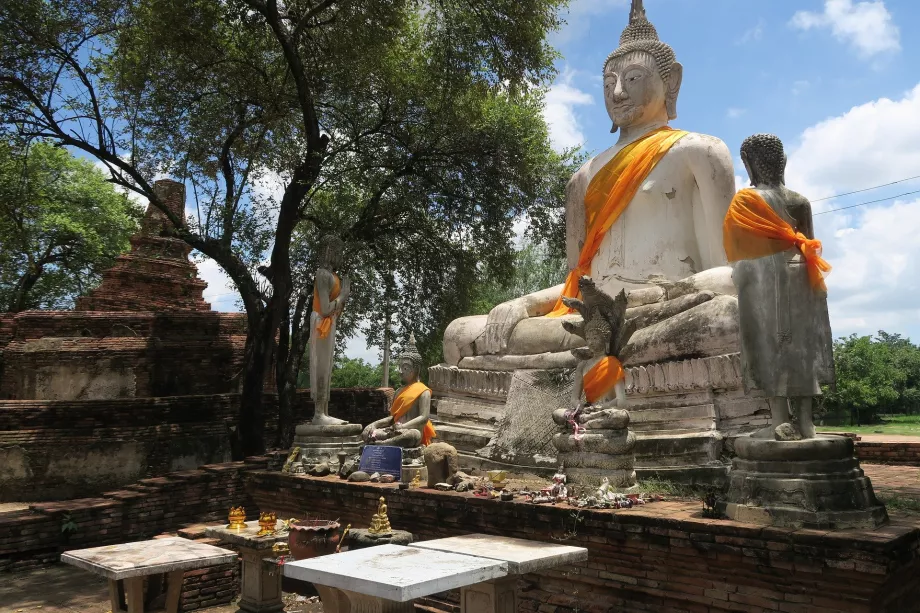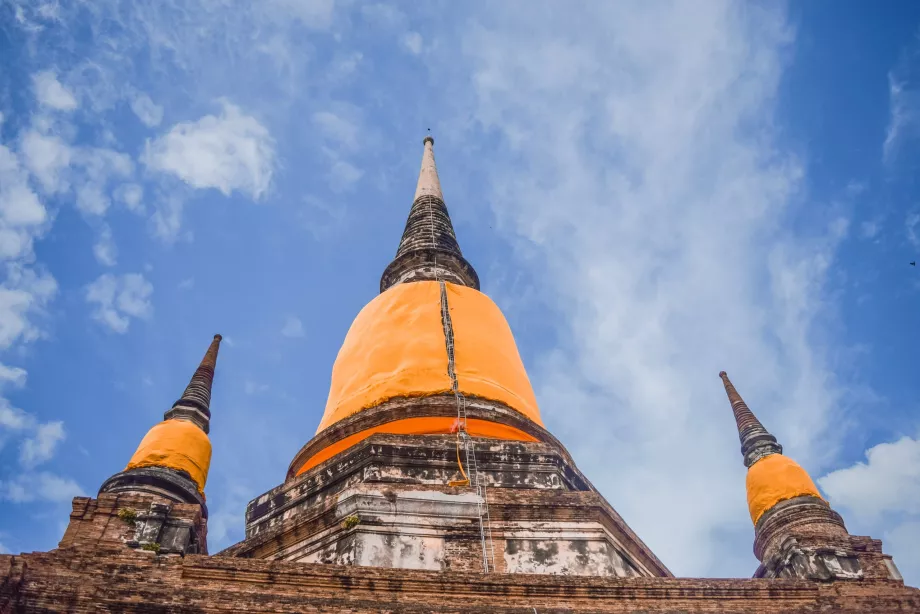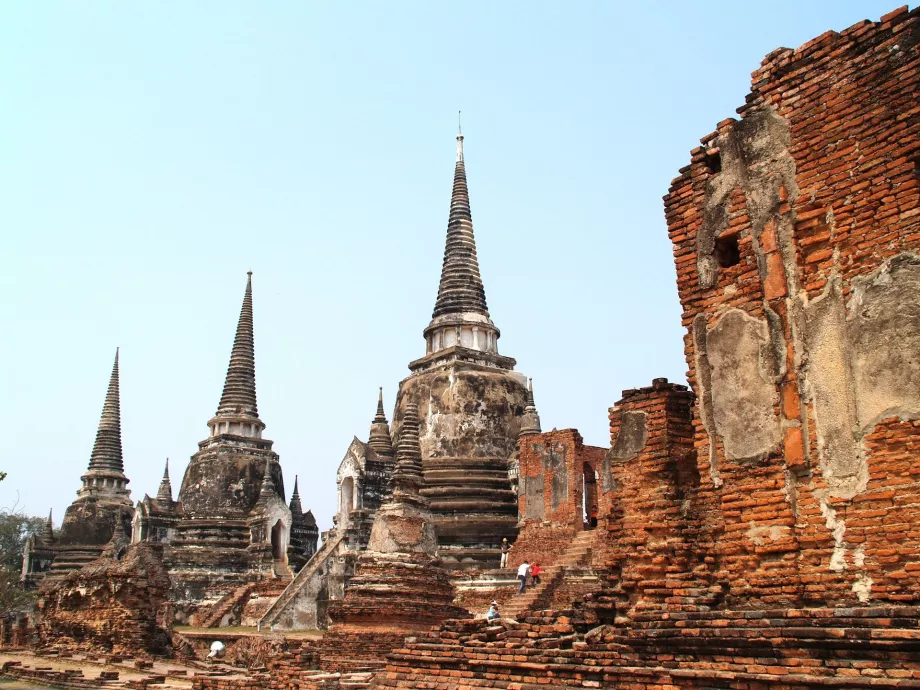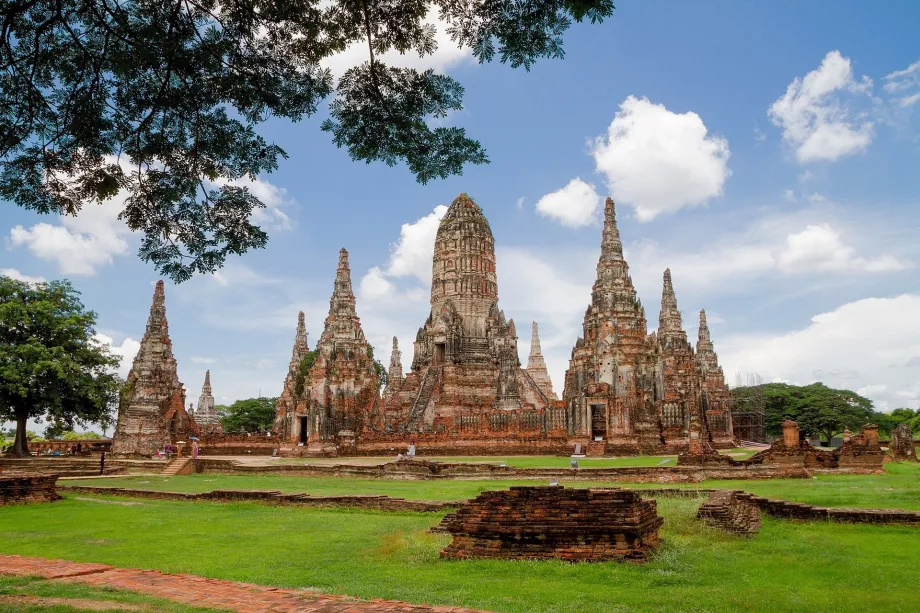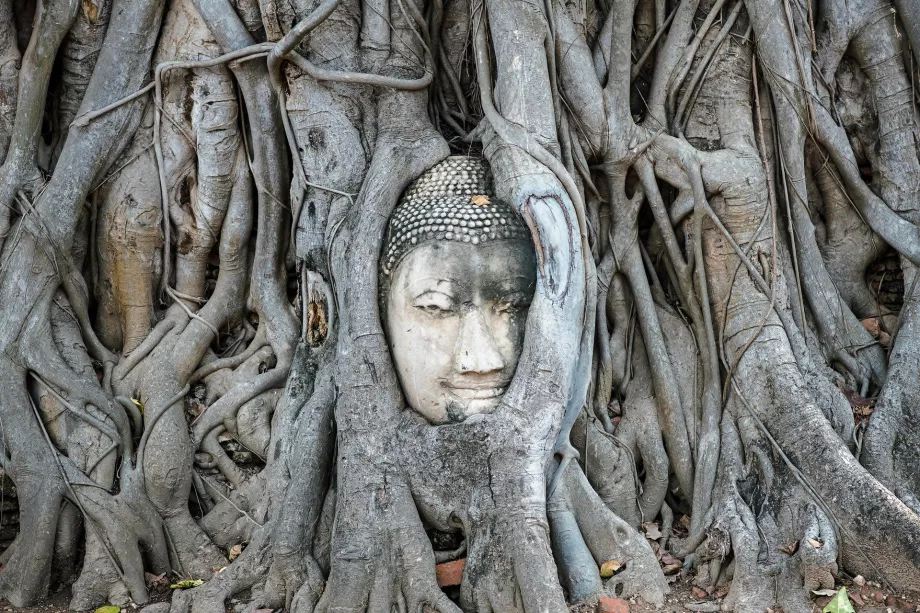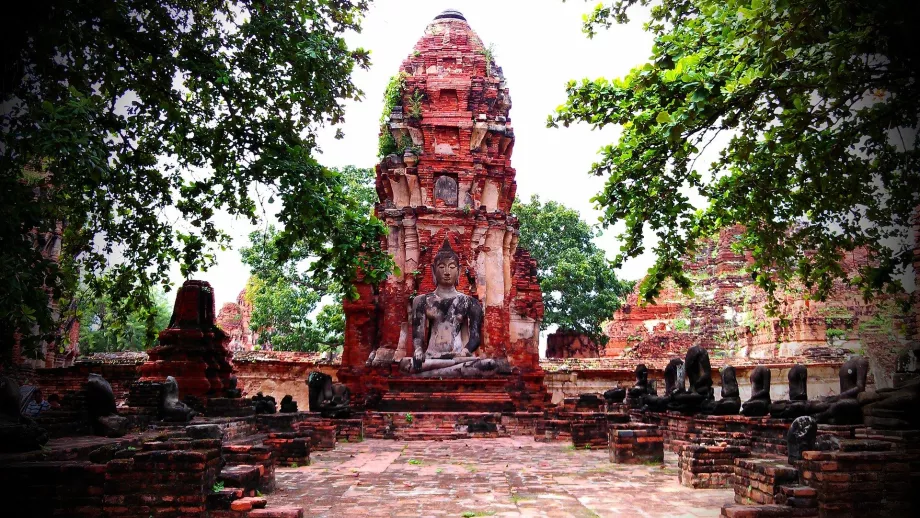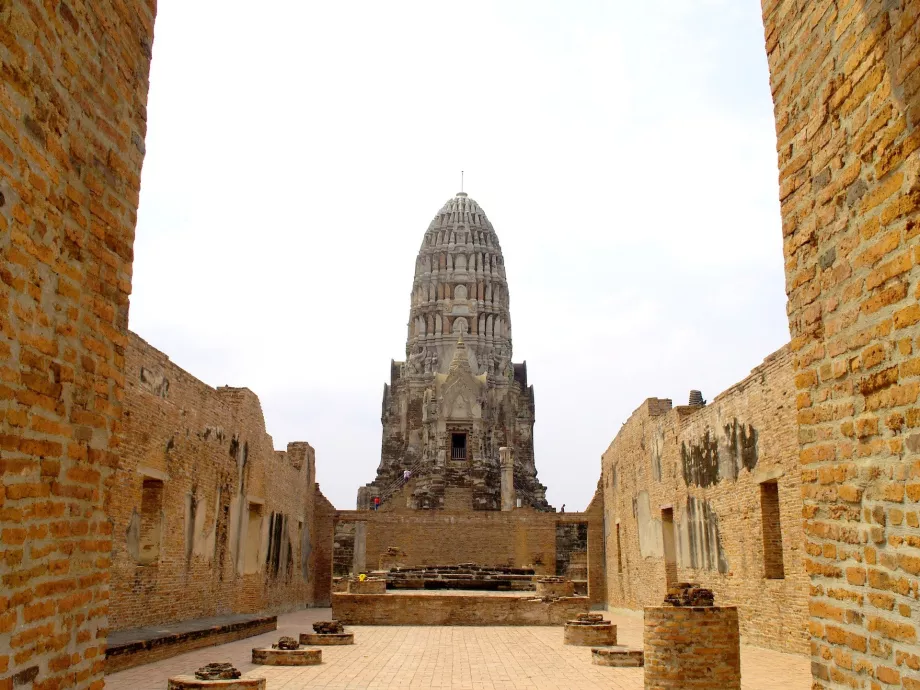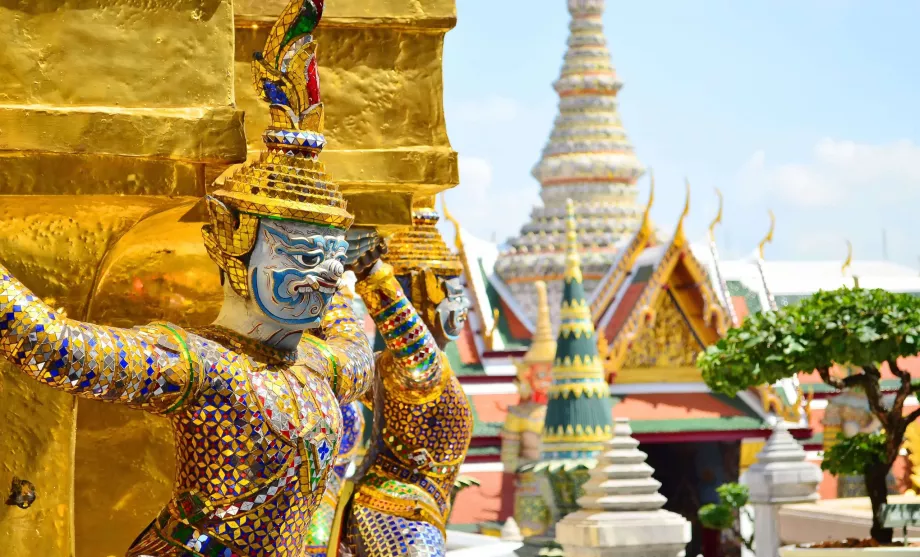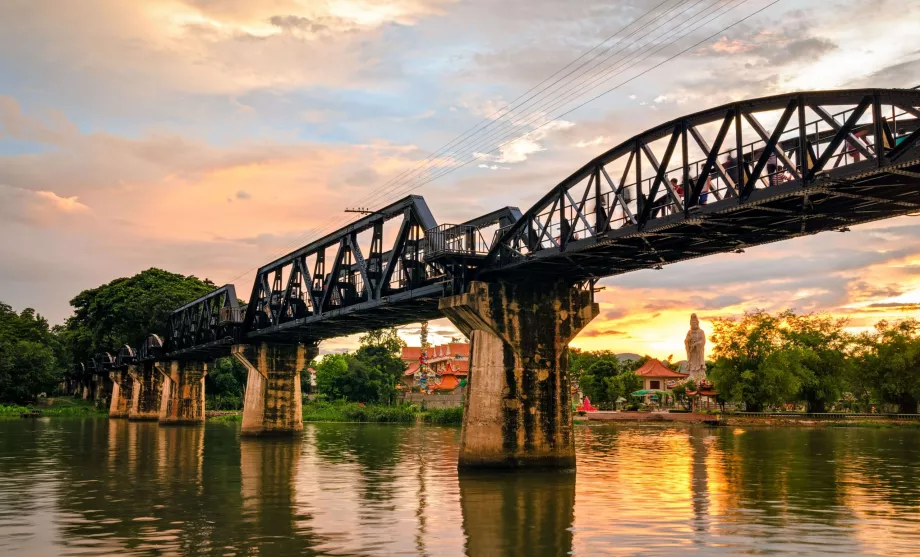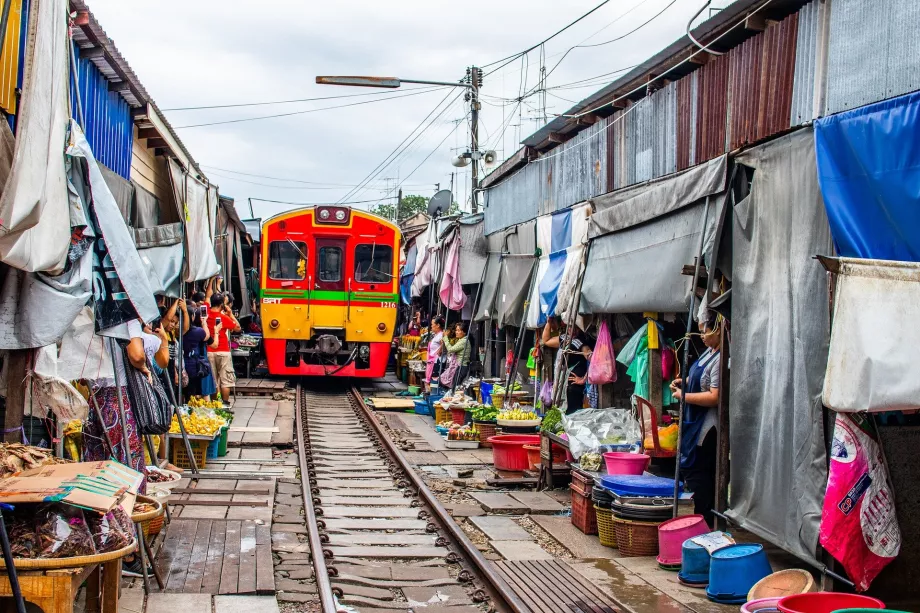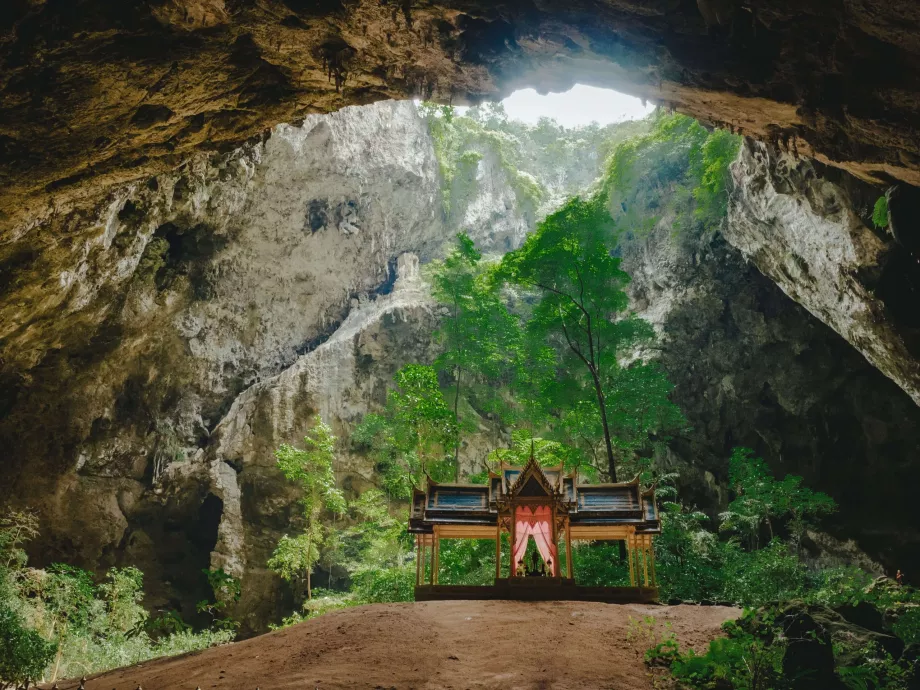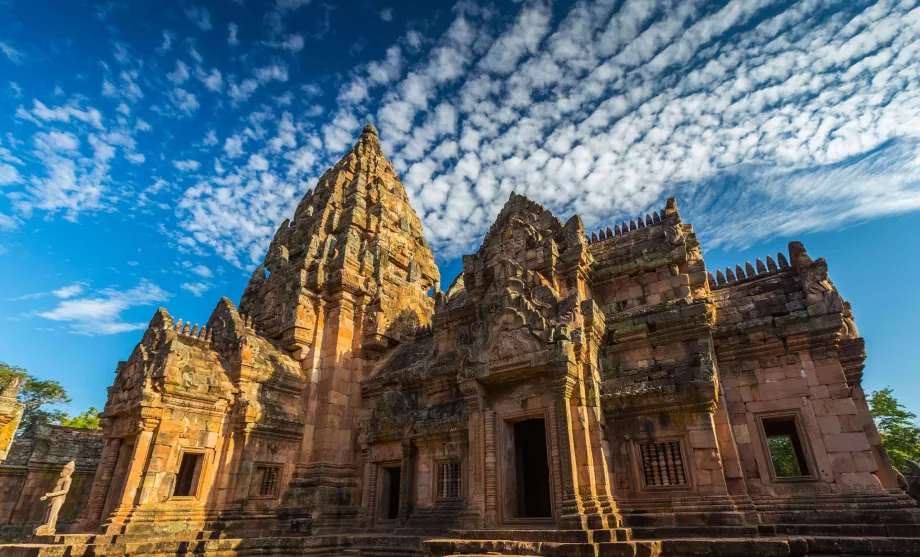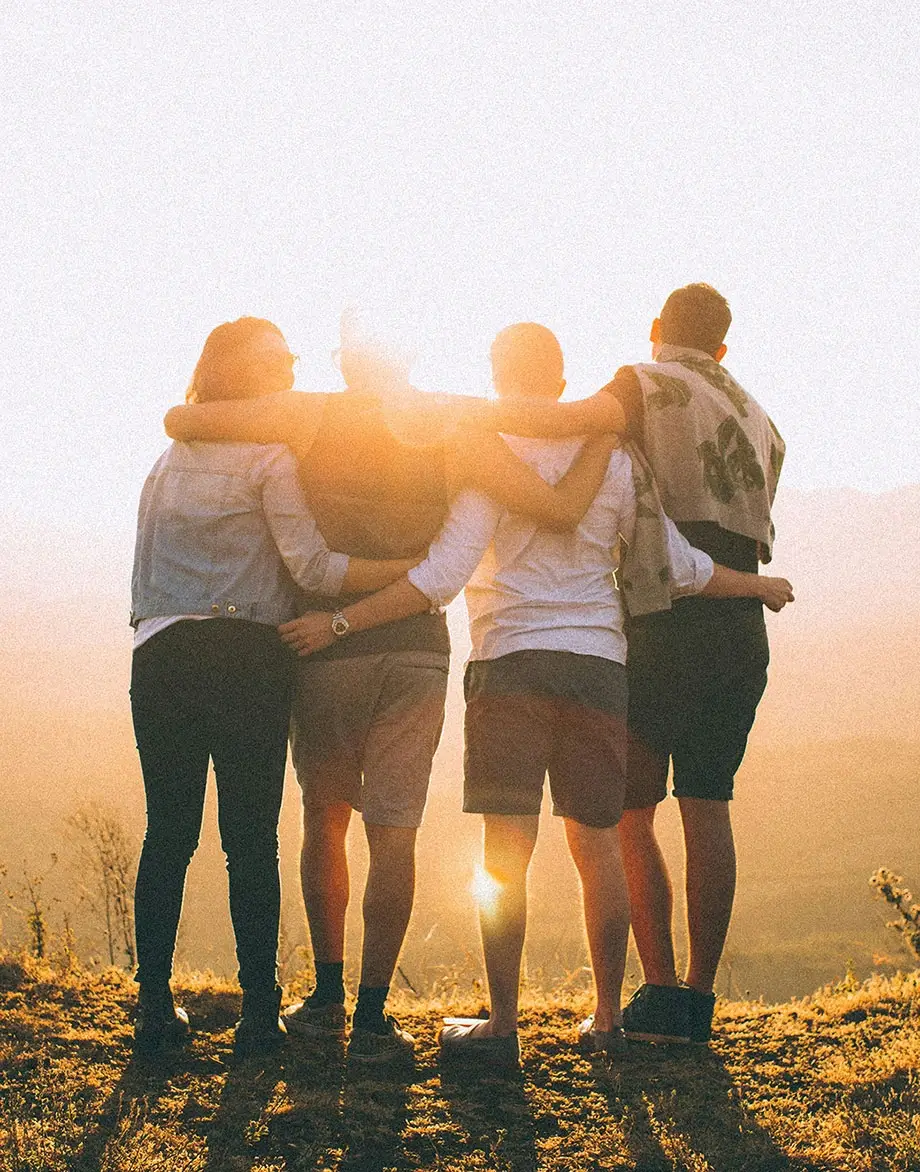Ayutthaya
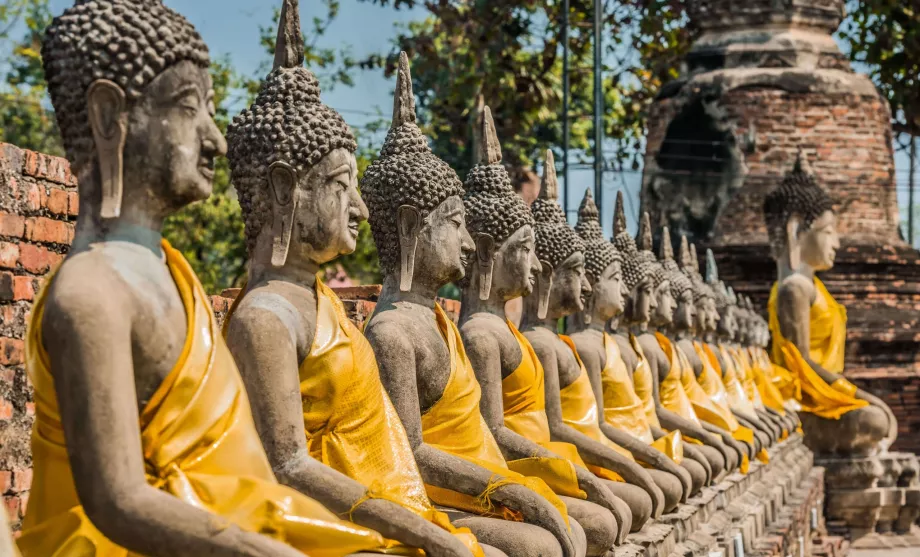
Just an hour and a half from Bangkok you will find the former capital of the former Siamese kingdom of Ayutthaya, it is the most popular tourist stop when travelling in the Thai interior.
- Special offers on flights to Thailand
- Search for the cheapest accommodation in Bangkok
Discovering the majestic stone ruins will reveal many secrets of the empire's former material, but above all spiritual wealth. The tranquil atmosphere is best enjoyed by bike or from the waters of the Chao Praya River.
The then capital was founded in 1351, but it is speculated that many ancient temples and monuments stood on the site as early as the 1st millennium BC. Old Ayutthaya is very large and well-preserved, so it's no wonder it boasts a UNESCO World Heritage Site.
Historical Park or the Venice of Thailand
The centre of old Ayutthaya lies in the middle of a large meander of the Chao Phraya River, which is furthermore interwoven with many artificial water channels creating an almost mystical atmosphere in many places. This is one of the reasons why Ayutthaya is known as the "Venice of Thailand" or the "Venice of the East".
All the temples and important monuments are located in a relatively small area and are included under the Ayutthaya Historical Park. Although the official name may suggest a flat entrance fee, you can move around the city centre quite freely and only pay to enter individual temples.
The following monuments should definitely not be missed.
The Grand Palace
Wat Phra Si Sanphet also called as the Grand Palace is the largest temple in Ayutthaya and is located right in the center of the historic district. The palace was completed in 1351, but during the 18th century, virtually all of it was destroyed by the Burmese. It has been partially restored to its historic appearance and even today is the largest temple in the city.
The main landmark is the 3 tall chedis with the remains of the Siamese kings.
The temple is open from 8:30am to 7pm and there is an entrance fee 50 thb.
Wat Chaiwatthanaram
Ayutthaya's second largest Buddhist temple dates back to 1630 and its location right on the banks of the Chao Phraya River makes it one of the town's main landmarks. The temple is built in an unconventional (at least for Thailand) Khmer style of red brick and houses a total of 120 Buddha statues.
It is the only one located on the right bank of the river. The temple is open from 9:00 am to 5:00 pm and you have to pay to enter 50 thb.
Wat Mahathat
More or less only ruins remain of this temple dating back to 1374, yet it is one of the most visited places in the city. It used to be the most important temple of Ayutthaya, as all royal ceremonies were held here.
However, tourists are attracted by the iconic head of Buddha emerging from the roots of the tree. Earlier, the bust was hidden in the soil, but along with the growing tree, it gradually broke through to the surface.
The site is open daily from 8:30am to 5pm and tickets cost 50 thb.
Wat Ratchaburana
Dating back to 1424, the beautifully decorated prang, which is also the tallest of all the city's temples, captivates tourists. One can climb it and enjoy the view of the entire historical park.
Like the other temples, there is a fee to enter 50 thb.
Reclining Buddha statue
In the remains of Wat Lokaya Sutharam temple, you will come across the famous 42 meter long stone statue of the Reclining Buddha. It is one of the most photogenic monuments, although the bronze Reclining Buddha at Bangkok's Wat Pho temple is much more impressive.
The statue can be seen for free 24 hours a day.
Other temples and monuments
But Ayutthaya offers many more attractions and sights that we can't fit into this mini-guide. For a complete list of all temples and monuments, visit the official tourism website: tourismthailand.org.
Entrance fees and opening hours of monuments
Most of the temples and monuments in the city open between 8:00 and 9:00 am every day and close around 5:00 pm.
Tickets can only ever be bought separately for individual temples and cost from 20 thb to 50 thb. You can only pay cash. The areas outside the temples are open 24 hours a day, you will not pay any entrance fee to the historic district of the city.
How to get around the city
The historic centre is accessible in three main ways: on foot, by bicycle and by tuk-tuk.
The distances are quite long and since Ayutthaya is on flat land, the ideal mode of transport is the bicycle. There are literally rental shops on every corner and you can pay around 150 thb for a day's rental.
You can arrange with a tuk-tuk driver to go around all the major temples with you, for a full day the acceptable amount is up to 350 thb.
Accommodation Ayutthaya
To enjoy the city properly, we recommend staying here for sure for at least one night. You'll find more than enough hostels, budget and luxury hotels. We would recommend these accommodations:
- The Park Ayutthaya Resort And Spa *** - a smaller, relaxed hostel right in the heart of the historic park. Rates from 17 eur per night
- Baan Suan Krung Thao *** - a very nice modern guesthouse just a few metres from the minibus stop to Bangkok. Prices from 26 eur per night
- iuDia **** - modern boutique hotel overlooking the Chao Phraya River. Rates from 62 eur per night
Find all accommodation in Ayutthaya on booking.com or agoda.com.
How to get to Ayutthaya
Ayutthaya lies about 80km north of Bangkok, making it an ideal place for a day trip or more likely a two-day trip from the capital. With transport companies and search engines, you can sometimes also come across the full name of the city "Phra Nakhon si Ayutthaya".
By bus
The most frequent way to get to the city is by bus or rather minivan/van. In Bangkok they all leave from the central Mochit bus station, where there is a special outdoor area just for smaller vans. You'll always find ticket offices in front of the platforms.
In Ayutthaya, most vans stop on Naresuan Road(exact location on map), some leave from the intersection of Naresuan Road and Soi Bang Ian(location on map).
The journey takes an hour and a half and costs 100 thb. Tickets do not need to be booked in advance.
By train
The other option is to travel by train, which has the advantage of stopping at stations in Bangkok with direct links to the metro (Bang Sue and Hua Lamphong) as opposed to buses. The disadvantage is the considerable irregularity in timetables, with trains running on the route early in the morning and then not until the afternoon.
The train is virtually as fast as the bus and you can buy tickets for 2nd and 3rd class cars at the station. A 3rd class ticket with just wooden benches in a 3+3 arrangement costs 25 thb, 2nd class in a 2+2 seat arrangement works out at 65 thb.
Timetables can be found on the Thai Railways website: www.dticket.railway.co.th
What to see around
Discover all the places to see in Thailand.
Any questions left?
If you have any questions or comments about the article...
